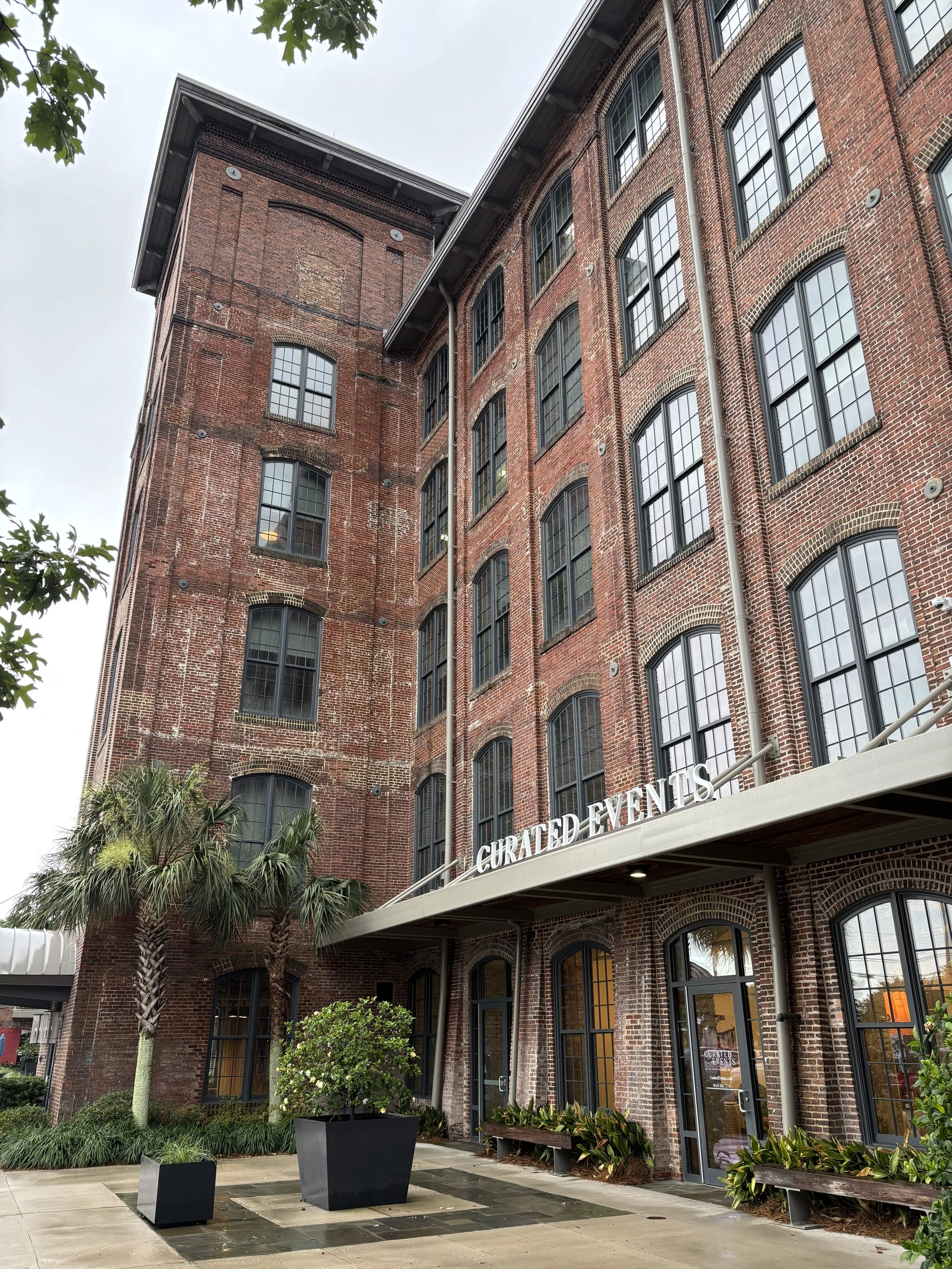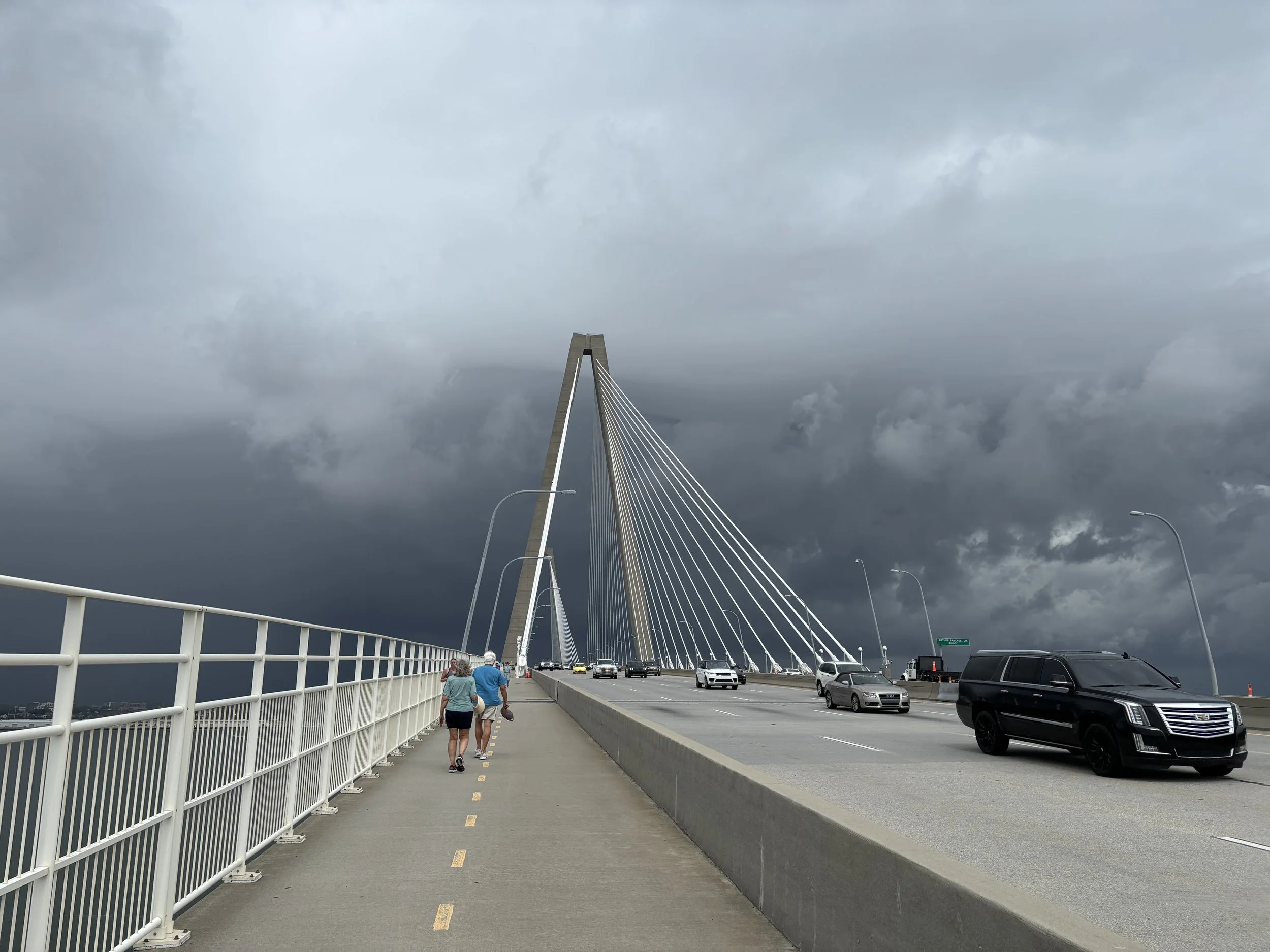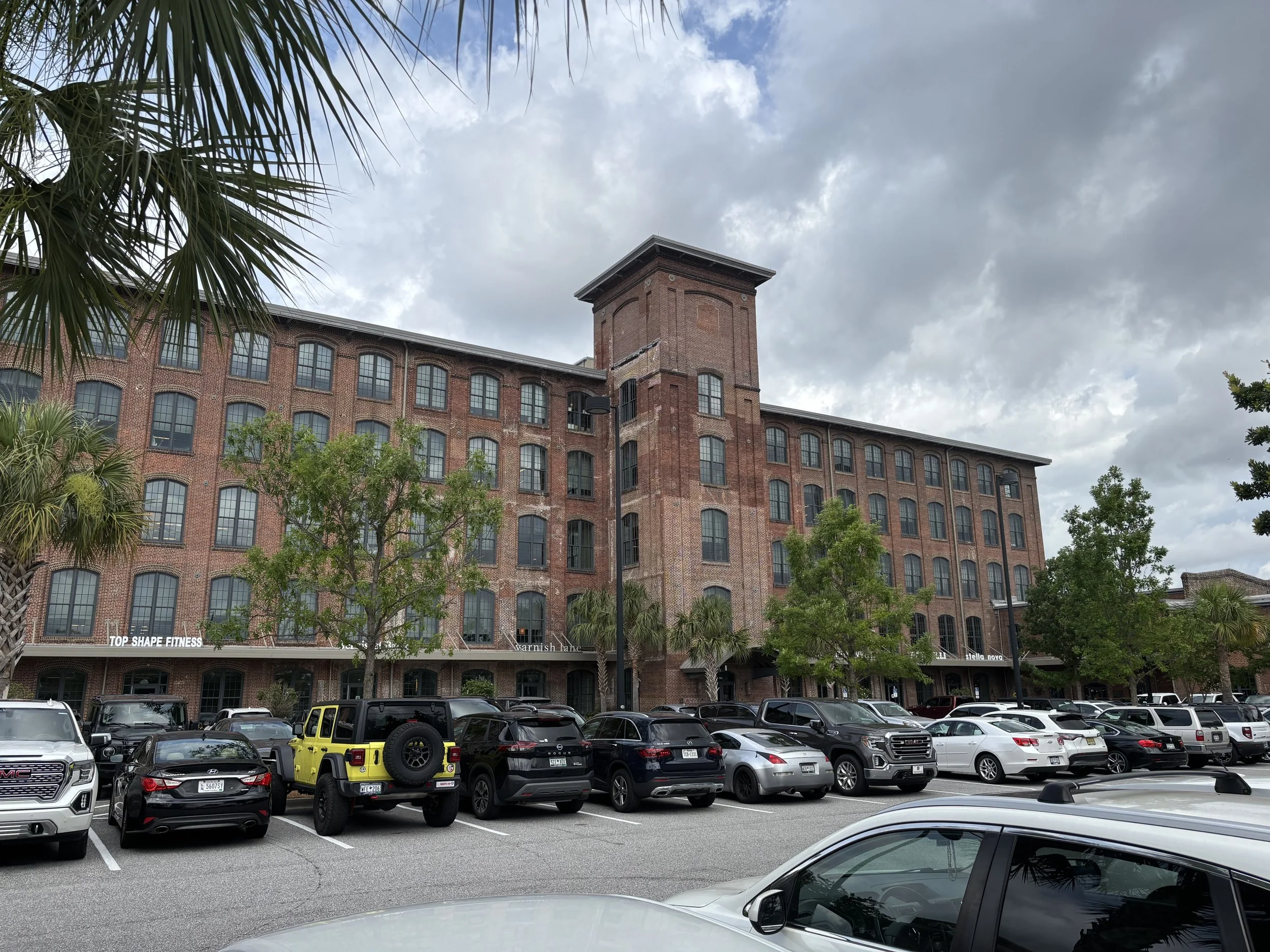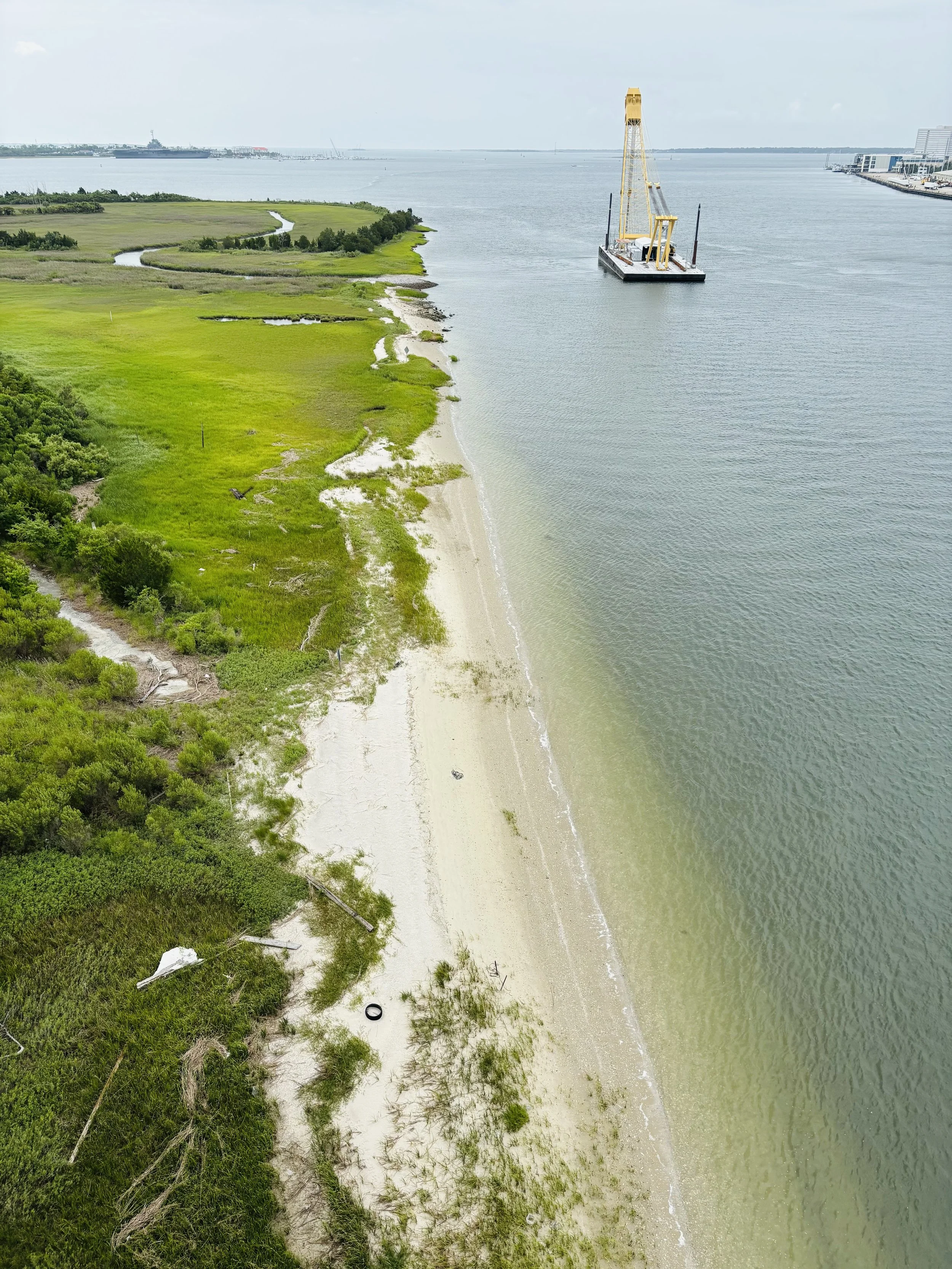Cigar Factory | Charleston
Cigar Factory
One early morning in Charleston, I chose a new running route—from downtown across the Arthur Ravenel Jr. Bridge to Mt. Pleasant and back. The bridge stretches 2.5 miles, and as I made my return, the sky darkened. The air thickened with the scent of coming rain.
Already halfway across, turning back wasn’t an option. So, I pressed on. Then, almost without warning, the sky went black. Headwinds surged to nearly 40 mph. Rain and hail pelted me with a vengeance. There was nowhere to hide. Visibility dropped to nearly zero. I looked down at the highway—cars had stopped. All I could think about was the Baltimore bridge collapse. I stopped running and clung to a steel cable, wind and hail hammering me from all sides. For fifteen minutes, I clambered there—soaked, cold —the longest fifteen minutes of my running life.
Dark Clouds on Arthur Ravenel Jr. Bridge
At the first break in the storm, I sprinted toward the nearest shelter that looked sturdy enough not to collapse into the river with me. That refuge turned out to be one of the shops at the Cigar Factory. Drenched and shivering, I dried myself with paper towels. The shopkeeper who had let me in was warm and welcoming. When I asked about the building, he smiled and shared its layered past.
The Cigar Factory—first known as the Charleston Manufacturing Company, later Charleston Cotton Mills—was built in 1882 as a marvel of industrial modernity. Outfitted with electricity, steam heat, and a fire-safety system, it represented the cutting edge of mill technology at the time. During the Great Depression, when jobs vanished and hope thinned, this brick fortress offered rare stability: full days of work for fair wages. At its peak, 1.5 million cigars left its doors each day, rolled by hand.
Shops at Cigar Factory
Today, the building has shed its industrial skin. It now houses upscale boutiques, restaurants, creative offices—including culinary classrooms from Johnson & Wales—and even an ophthalmologist. A space once thick with smoke and sweat now breathes retail calm and curated charm.
But perhaps the most profound legacy lies in its role as the unlikely birthplace of a national anthem of justice. During a bitter strike in 1945–46, a worker named Lucille Simmons sang a gospel refrain— “I’ll Overcome Someday.” Her voice, rising from the factory floor, became “We Shall Overcome,” the enduring hymn of the 1950s and 1960s Civil Rights Movement. At the time, the factory employed about 1,400 workers—Black and white—who walked out in protest of low wages and racial discrimination. After months of picketing, their strike ended with a settlement: higher pay, better treatment, and a song that would echo through history.
If not for the scariest run of my life, I would have missed this quiet corner of Charleston’s history - an edifice that had withstood earthquakes, and racial strife. But maybe that’s the quiet trick of travel, and of life: sometimes it takes a moment of fear, a forced detour, to lead you to something enduring.
View of River from the Arthur Ravenel Jr. Bridge




